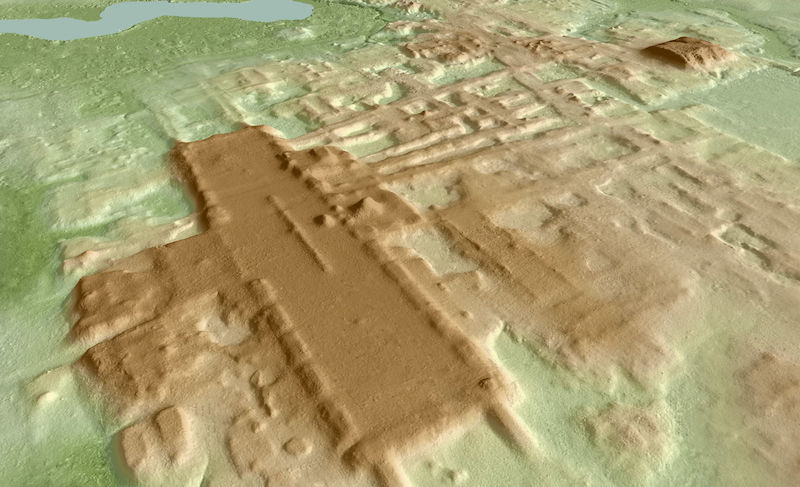One of the more unsung technologies that has had an impact on exploration in recent years is lidar. As its name implies, lidar functions a bit like radar, but rather than using radio waves as a method of detection, laser light is used instead. This allows researchers and scientists to use a lidar system to penetrate layers of a jungle canopy for instance, and get an idea of what lies underneath. This has been used to great effect amongst archaeologists for instance, who have used the lidar systems to discover ancient ruins that have been reclaimed by the jungle in parts of Mexico, Central America, South America, and Asia. Over the past few years alone, we’ve seen some impressive structures that have been lost for centuries identified, expanding our scope of knowledge about a wide variety of civilizations that rose up, flourished for a time, then disappeared from history. Recently, this happened once again as a major lost monument was uncovered in Mexico.
Using lidar, a team of archaeologists have found a 2800-year old Mayan monument that has been covered by the jungle for countless generations. The monument is a large platform that is believed to have been used for observing the stars and the movement of the heavens. It features a number of supporting structures as well, including reservoirs, roads, and a pyramid-shaped structure. The entire complex is located in the Tabasco region of Mexico at a site known as the Aquada Fénix where a number of other archaeological finds have discovered.
Locating this massive monument is a major win for researchers alone, but it isn’t the most astounding part. Radiocarbon dating indicates that the site is somewhere between 2800 and 3000 years old, making it the oldest remnants of the Maya civilization that have ever been uncovered. This has caused historians to rethink their timelines for when the Maya first rose to prominence in the region and how long they ruled. The monument even relates the nearby village that archaeologists have been studying by more than 800 years, indicating that the Mayans were active for centuries longer than previously thought.
The use of lidar is effective that it is actually identifying new archaeological dig sites at a faster rate than researchers can excavate them. Knowing that a site exists is one thing, but having the resources, funding, and personnel to uncover them is another matter. This is especially true at the moment, when such work has pretty much come to a standstill. Needless to say however, once archaeologists can return to their research, they’ll have years of work waiting for them.
Amazing stuff. I can’t wait to see what we discover in the years ahead.
- Gear Review: The Xero Scrambler Mid is an Ultralight Hiking Shoe for Spring - March 1, 2023
- Gear Review: Yeti Roadie 48 Wheeled Cooler - August 18, 2022
- Kristin Harila Continues Pursuit of 8000-Meter Speed Record - August 16, 2022
